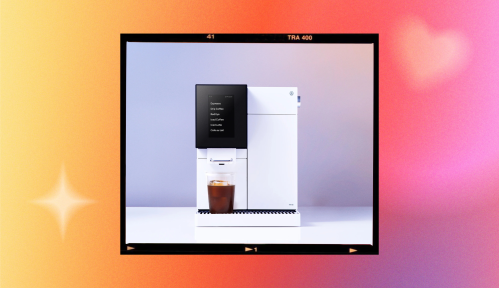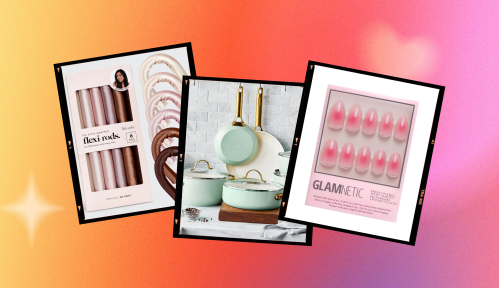As celebrity facialist Joanna Czech always says, “your face starts at your hairline and goes all the way down to your nipples.” While most of us have got a flawlessly curated routine to take care of the strip of skin between our foreheads and chins (otherwise known as our faces), the space beneath often gets neglected, until one day you put on a strapless dress and think, “What the heck happened to my chest?!”
Despite the fact that it often plays second fiddle to the face, the chest—otherwise known as your décolletage—is actually among the first body parts to show signs of aging. “There’s a myth that the face is the most sensitive area of the body that you have to protect,” says dermatologist Lily Talakoub, MD, of McLean Dermatology and Skincare Center. As she puts it: “You can get one sunburn on your face and you’ll be fine, one sunburn on your chest and you’re doomed for life.” Now, excuse me as I mentally backtrack and try to remember if I’ve ever scorched my chest to the point of being “doomed for life.” (I definitely have…)
If all of this has made you reconsider the way you’re caring for your décolletage, well, #same. So I chatted with the pros to see how to give your cleavage the tender love and care it needs, and suffice to say I will never be sleeping on my side (or skipping out on sunscreen) ever again.
Prevention
According to Dr. Talakoub, cleavage wrinkles are a problem for many people, regardless of age, so what can you do to fend them off?
Sunscreen, sunscreen, sunscreen: With all of that aforementioned sun sensitivity in mind, your first line of defense is SPF, which you should layer on 365 days of the year, rain or shine. “If you get even one sunburn on your chest, the collagen elastin degrades to the point of no return, and that area will be more sensitive in the rest of your life,” says Dr. Talakoub, driving home the point that sun protection on your chest really is important.
This Parisian Skincare Brand Is Launching in the United States for the First Time—Here’s What a Derm Wants You to Know

We’re Calling It: Cleansing Balms Are the Face Wash of the Future—Here Are 3 to Add to Your Cart

This Is the One Product That Scarlett Johansson Always Keeps in Her Purse and on Her Bedside Table

Pull your products down: In this edition of, “the simplest advice you’ll receive today,” protect your chest by simply pulling all of the skin-care products you already use down to your nipples (instead of stopping at your chin). You don’t need to invest in any sort of fancy neck or face creams, but when you cycle through your usual cleanser-toner-moisturizer routine, bring those products to the chest.
Sleep on your back: It may sound extreme, but according to Dr. Talakoub the way you sleep can show itself all over your chest. “You can’t sleep on your side. If you sleep on your side, the chest skin wrinkles,” she says. Though you may not realize it initially, over time, you’ll get vertical lines in your cleavage, which will thin out the skin. “It can happen to women with small breasts, but it’s more prominent with women who have large breasts.” Your best bet is to moisturize your chest aggressively before you hit the hay to help prevent this creasing from happening, and sleep on your back whenever possible.
Try an overnight mask: If skipping out on side sleeping simply isn’t an option (because, let’s be honest: a good night’s sleep tops all, including wrinkle reduction), Dr. Talakoub recommends plastering your chest with a SiO Beauty Skin Pad ($30), which is an expertly-shaped slab of silicone that helps keep your boobs apart no matter what position you’re in, and apparently, really does work.
Ditch the sports bra outside of the gym: Aside from the fact that wearing a sweaty sports bra all day long can leave your chest covered in pimples, over time it can also potentially leave behind lines. “Tight sports bras squish the chest together and can cause wrinkles in the central chest,” says. Dr Lily, noting that they’re totally fine to wear for a workout, but should be swapped out for a regular bra in your everyday life. Worst news I’ve ever heard, TBH.
Treatment
If you, like me, are currently looking down at your chest and thinking, “oh s*it,” don’t worry: It’s not a totally lost cause. While the best way to deal with signs of aging is to prevent them before they start, there are a few things you can do after they’ve already taken hold.
Lasers: Sun damage manifests by way of thinner skin, red and brown discoloration, sun spots, and wrinkles, to name a few, and the best way to target them all at once is with a laser. Dr. Talakoub is a fan of IPL lasers on lighter skin tones, which she says get rid of sun damage “completely,” but there are a few other options for those with darker skin tones. “Fraxel lasers use fractional technology which penetrates the superficial layers treating fine lines and wrinkles a fraction of the area at a time, which results in smoother, brighter skin with minimal downtime. It also removes sun damage brown spots and fine lines,” says board certified dermatologist Michele Green, MD. “Thermage is a non-invasive laser procedure that uses radio frequency technology which, can be done on all skin types and produces collagen resulting in smoother, tighter skin.”
Retinol: As far as anti-aging goes, retinol can work the same magic on your chest as it does on your face. It helps with resurfacing your skin from the inside out by way of stimulating cell regeneration, which means it can help with dark spots, wrinkles, and other signs of sun damage. “A really good, important product to use would be a retinol or a Retin-A type medicine. That will definitely help lighten dark spots and decrease lines and wrinkles,” says Dr. Spizuoco. She suggests pairing azelaic acid with a retinoid to help lighten dark spots even further. And of course, lots and lots of SPF to guard against the sun’s rays.
As you now know (in case you didn’t already) Sun protection is so important! So here are a few of our favorite sunscreens. Plus, what you can do about any pesky pimples that might pop up on your chest.
Sign Up for Our Daily Newsletter
Get all the latest in wellness, trends, food, fitness, beauty, and more delivered right to your inbox.
Got it, you've been added to our email list.








